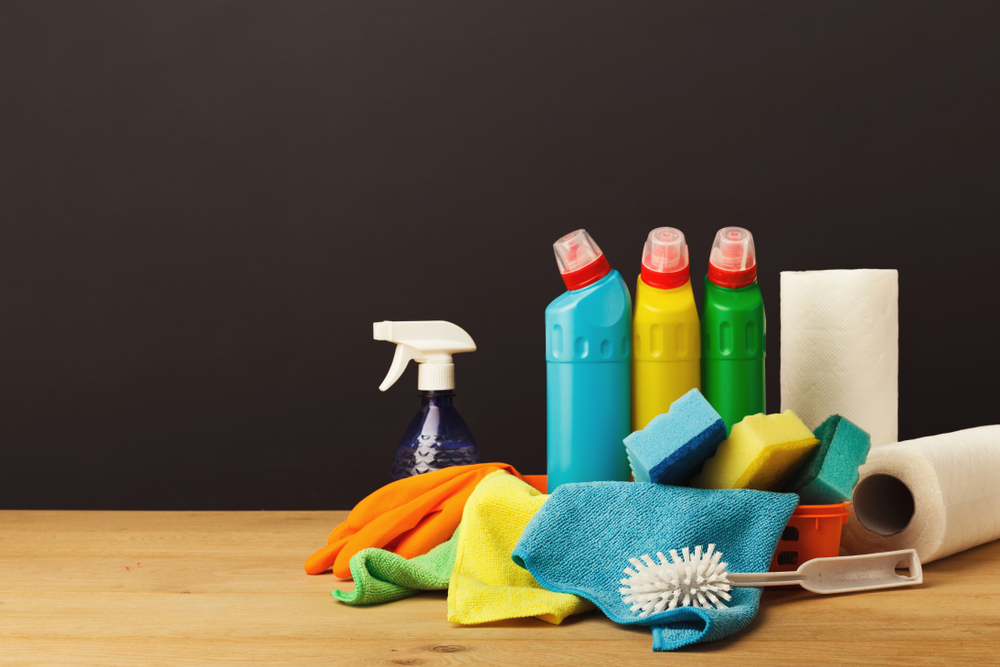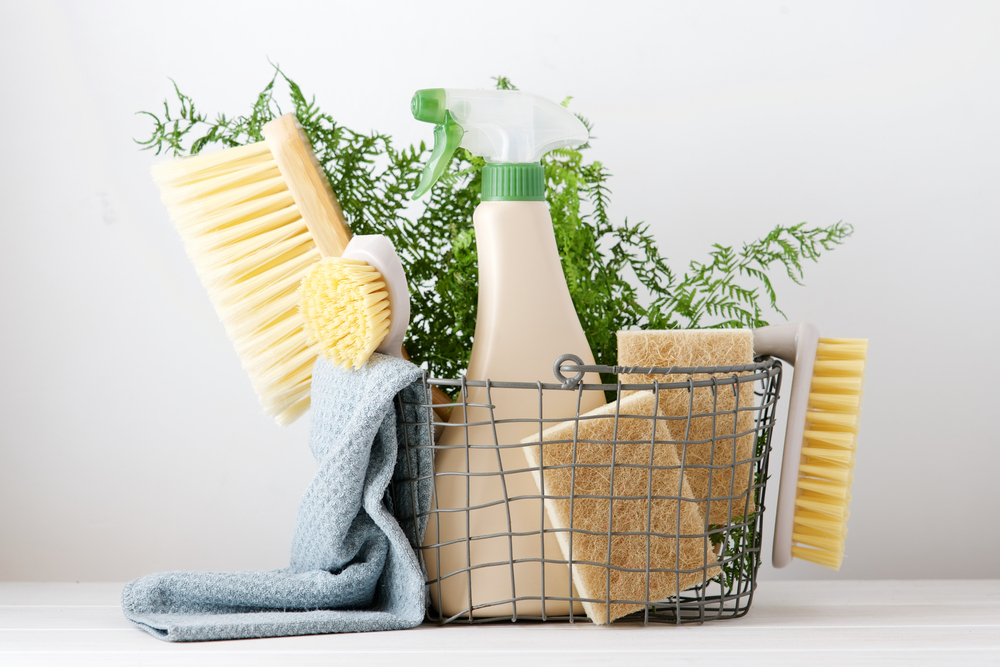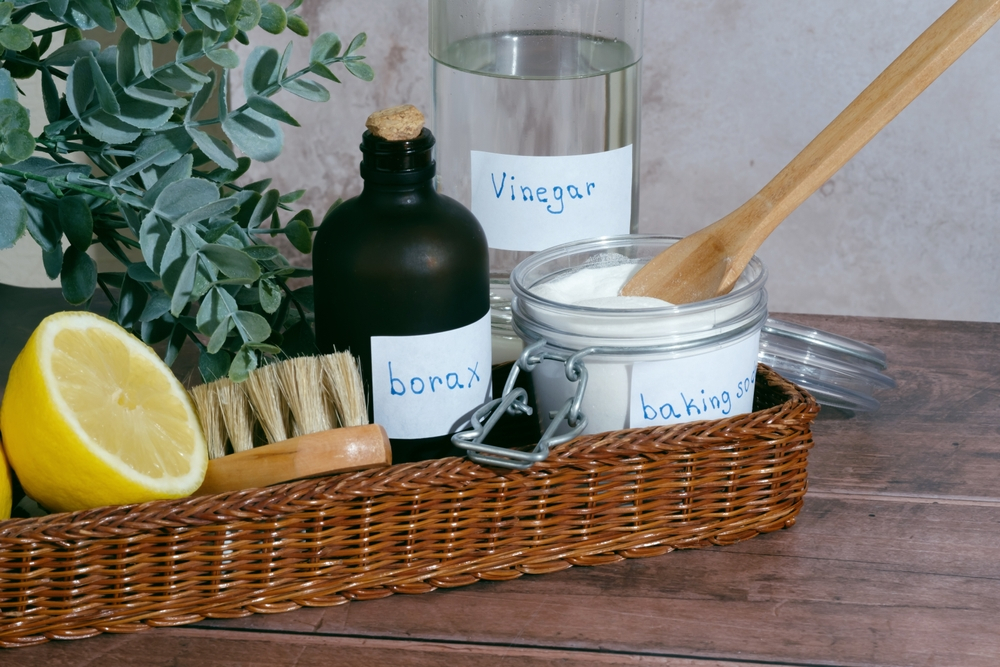The Ultimate Guide to Eco-Friendly Cleaning Products
The Ultimate Guide to Eco-Friendly Cleaning: A Path to Greener Living
Eco-friendly cleaning is not just a trend; it’s a necessary shift towards more sustainable and healthier living. Unlike conventional cleaning methods that rely on harsh chemicals, eco-friendly cleaning prioritizes natural, non-toxic, and biodegradable ingredients. By choosing products and practices that are gentle on the environment and human health, we can reduce our ecological footprint and create a safer, cleaner world for future generations.
The impact of traditional cleaning products on both the environment and human health cannot be overstated. Many conventional cleaners contain ingredients that are harmful when released into the air or waterways, contributing to air and water pollution. These chemicals can also linger on surfaces, posing risks to pets, children, and vulnerable individuals. Switching to eco-friendly cleaning products not only mitigates these risks but also supports sustainable practices and reduces our carbon footprint.
This comprehensive guide aims to provide readers with the knowledge and tools they need to transition to eco-friendly cleaning practices. From understanding the principles of eco-friendly cleaning to practical tips for implementation, each section will delve into different aspects of green cleaning. Whether you’re looking for natural ingredients, DIY recipes, or recommendations for eco-friendly brands, this guide has you covered.
Understanding Eco-Friendly Cleaning
Eco-friendly cleaning goes beyond simply avoiding harsh chemicals; it encompasses a holistic approach to cleaning that considers the entire lifecycle of products and their impact on the environment. It involves using ingredients and methods that are sustainable, non-toxic, and biodegradable, minimizing harm to ecosystems and human health.

Benefits of Using Eco-Friendly Cleaning Products
- Protects the Environment: Conventional cleaning products often contain chemicals that can pollute waterways, harm wildlife, and contribute to air pollution. Eco-friendly alternatives use natural ingredients that are safer for the environment.
- Promotes Healthier Indoor Air Quality: Many traditional cleaning products release volatile organic compounds (VOCs) into the air, which can cause respiratory problems and exacerbate allergies. Eco-friendly products are free from these harmful chemicals, resulting in cleaner indoor air.
- Safer for Pets and Children: Pets and children are more vulnerable to the effects of chemical exposure due to their smaller size and developing immune systems. By using eco-friendly cleaning products, you can create a safer environment for your loved ones.
- Supports Sustainable Practices: Eco-friendly cleaning products are often made from renewable resources and produced using sustainable methods, reducing reliance on fossil fuels and minimizing waste.
Common Misconceptions About Eco-Friendly Cleaning
Despite the numerous benefits of eco-friendly cleaning, there are several misconceptions that may deter people from making the switch:
- Eco-friendly products are not as effective: While some eco-friendly products may require more effort or time to achieve the same results as their conventional counterparts, many are just as effective, if not more so.
- Eco-friendly cleaning is expensive: While some eco-friendly products may have a higher upfront cost, they often last longer and provide better value in the long run. Additionally, many DIY cleaning solutions can be made using inexpensive ingredients.
- It’s challenging to find eco-friendly options: With the increasing demand for sustainable products, eco-friendly cleaning options are now widely available in stores and online. Additionally, many household staples like vinegar and baking soda can be used for cleaning.
Types of Eco-Friendly Cleaning Products
A. Natural Ingredients to Look for in Cleaning Products
When choosing eco-friendly cleaning products, it’s essential to look for natural ingredients that are effective yet gentle on the environment. Some key ingredients to look for include:
- Vinegar: Acetic acid in vinegar acts as a natural disinfectant and can effectively dissolve mineral deposits and grease.
- Baking Soda (Sodium Bicarbonate): Baking soda is a mild abrasive that can be used to scrub surfaces without scratching. It also helps neutralize odors.
- Citrus Extracts: Citrus fruits like lemons and oranges contain natural antibacterial properties and can add a fresh scent to cleaning solutions.
- Essential Oils: Essential oils like tea tree oil, lavender oil, and eucalyptus oil have antimicrobial properties and can be added to homemade cleaning solutions for a pleasant fragrance.
B. Non-Toxic and Biodegradable Options
In addition to natural ingredients, eco-friendly cleaning products should be non-toxic and biodegradable, meaning they break down into harmless substances when disposed of. Some non-toxic and biodegradable options include:
- Plant-Based Cleaners: Made from renewable resources like plant oils and extracts, plant-based cleaners are free from synthetic chemicals and are biodegradable.
- Enzyme Cleaners: Enzyme cleaners contain enzymes that break down organic stains and odors, making them effective and environmentally friendly.
- Oxygen Bleach: Oxygen bleach, also known as sodium percarbonate, is a non-toxic alternative to chlorine bleach that is safe for the environment and effective for whitening and disinfecting laundry.
C. DIY Recipes for Cleaning Products
Making your own cleaning products at home is not only cost-effective but also allows you to control the ingredients and reduce packaging waste. Here are some DIY recipes for common cleaning products:
- All-Purpose Cleaner: Mix equal parts water and vinegar with a few drops of essential oil (such as lemon or tea tree oil) in a spray bottle for a versatile cleaning solution.
- Window Cleaner: Combine water, vinegar, and a squeeze of lemon juice in a spray bottle for streak-free windows and mirrors.
- Toilet Bowl Cleaner: Sprinkle baking soda into the toilet bowl, add vinegar, and scrub with a toilet brush for a natural and effective clean.
- Carpet Freshener: Sprinkle baking soda mixed with a few drops of essential oil on carpets before vacuuming to deodorize and refresh fibers.
How to Incorporate Eco-Friendly Cleaning into Your Routine
A. Tips for Transitioning to Eco-Friendly Cleaning Products
Making the switch to eco-friendly cleaning products may seem daunting at first, but with a few simple tips, you can make the transition smoother:
- Start Small: Begin by replacing one or two cleaning products with eco-friendly alternatives and gradually transition to more sustainable options over time.
- Do Your Research: Look for products with third-party certifications like EcoLogo or Green Seal to ensure they meet environmental and health standards.
- Experiment with DIY Recipes: Try making your own cleaning products using simple ingredients like vinegar, baking soda, and essential oils to save money and reduce waste.

B. How to Properly Dispose of Old Cleaning Products
Proper disposal of old cleaning products is essential to prevent them from harming the environment. Here are some tips for disposing of old cleaning products responsibly:
- Check Local Regulations: Many communities have special disposal programs for hazardous household waste, including cleaning products. Check with your local waste management authority for guidance on how to dispose of these items.
- Donate or Share: If your old cleaning products are still usable, consider donating them to friends, family, or local organizations in need. Sharing unused products can help reduce waste and benefit others in your community.
- Use Them Up: Instead of throwing away partially used products, try to use them up responsibly. Be mindful of the quantity you use and avoid overusing products to minimize waste.
C. Tools and Accessories for Eco-Friendly Cleaning
In addition to eco-friendly cleaning products, using the right tools and accessories can further enhance your green cleaning routine:
- Microfiber Cloths: Microfiber cloths are highly effective at trapping dust and dirt without the need for chemical cleaners. They can be washed and reused multiple times, reducing waste.
- Reusable Spray Bottles: Invest in durable spray bottles that can be refilled with homemade cleaning solutions. Look for bottles made from recycled materials to minimize environmental impact.
- Eco-Friendly Brushes and Scrubbers: Choose brushes and scrubbers made from sustainable materials like bamboo or recycled plastic. These durable tools can be used for various cleaning tasks and are better for the environment than disposable alternatives.
Eco-Friendly Cleaning for Different Surfaces
A. Eco-Friendly Cleaning for Kitchen Surfaces
The kitchen is often the heart of the home but can also be a hotspot for germs and bacteria. Eco-friendly cleaning methods can help keep kitchen surfaces clean and safe for food preparation:
- Countertops: Wipe down countertops with a solution of vinegar and water to disinfect and remove grease and grime. For stubborn stains, make a paste with baking soda and water and scrub gently.
- Appliances: Clean stainless steel appliances with a soft cloth and a mixture of water and vinegar to remove fingerprints and smudges. For tougher stains, apply a paste of baking soda and water and let it sit before wiping clean.
- Sink: Deodorize and disinfect the sink by pouring baking soda down the drain, followed by vinegar. Scrub the sink with a brush or sponge to remove stains and rinse thoroughly.
B. Bathroom Cleaning Without Harsh Chemicals
Bathrooms are another area where eco-friendly cleaning is essential, as traditional cleaners can release harmful fumes in a confined space. Here are some eco-friendly cleaning methods for keeping your bathroom clean and hygienic:
- Shower and Bathtub: Remove soap scum and mildew from shower walls and bathtub surfaces with a mixture of vinegar and baking soda. Apply the solution with a sponge or scrub brush and rinse thoroughly.
- Toilet: Clean and disinfect the toilet bowl with a combination of baking soda and vinegar. Pour the baking soda into the bowl, followed by vinegar, and scrub with a toilet brush. Let it sit for a few minutes before flushing.
- Tiles and Grout: Use a homemade paste of baking soda and water to clean tile and grout lines. Apply the paste to the grout lines with a toothbrush and scrub gently to remove dirt and stains.
C. Safe and Effective Ways to Clean Floors and Carpets
Floors and carpets can harbor dirt, allergens, and bacteria if not cleaned regularly. Eco-friendly cleaning methods can help maintain a clean and healthy home environment:
- Hardwood Floors: Sweep or vacuum hardwood floors regularly to remove dirt and debris. Clean with a solution of water and vinegar using a damp mop, taking care not to saturate the wood.
- Tile Floors: Clean tile floors with a mixture of water and vinegar or a plant-based floor cleaner. Use a mop or sponge to apply the solution and remove dirt and stains.
- Carpets: Vacuum carpets thoroughly to remove dirt, dust, and allergens. Sprinkle baking soda on the carpet before vacuuming to deodorize and absorb odors. For deeper cleaning, consider using a carpet cleaner with eco-friendly detergent or renting a professional carpet cleaning machine.
Eco-Friendly Cleaning for Different Scenarios
A. Cleaning Up After Pets
Pets are beloved members of the family but can leave behind messes that require special cleaning attention. Eco-friendly cleaning methods can effectively remove pet stains and odors without harming the environment:
- Pet Stains: Blot up pet stains with a clean cloth and apply an enzyme-based cleaner to break down organic matter and eliminate odors. Follow the manufacturer’s instructions for best results.
- Pet Hair: Use a vacuum cleaner with a pet hair attachment to remove pet hair from floors, furniture, and upholstery. Consider using a rubber squeegee or rubber gloves to lift pet hair from carpet fibers.
- Pet Bedding and Toys: Wash pet bedding and toys regularly with a mild, fragrance-free detergent to remove dirt and bacteria. Use hot water and a high-temperature dryer cycle to kill germs and allergens.

B. Removing Tough Stains and Odors
Stubborn stains and odors can be challenging to remove, but eco-friendly cleaning methods can help tackle even the toughest messes:
- Carpet Stains: Blot up spills immediately with a clean cloth and apply a mixture of vinegar and water to the stained area. Gently scrub the stain with a soft brush or sponge and rinse with water.
- Upholstery Stains: Mix a solution of water and mild detergent and blot the stained area with a clean cloth. Avoid using too much water, as it can soak into the upholstery and cause water damage.
- Odor Removal: To neutralize odors, sprinkle baking soda on the affected area and let it sit for several hours or overnight. Vacuum up the baking soda to remove odors and refresh the space.
C. Tips for Eco-Friendly Laundry Cleaning
Laundry cleaning is a routine household chore that offers numerous opportunities to reduce environmental impact:
- Choose Eco-Friendly Detergents: Look for laundry detergents labeled as biodegradable and phosphate-free. These products are safer for the environment and produce less pollution.
- Wash in Cold Water: Washing clothes in cold water saves energy and helps preserve fabric colors. Most modern detergents are formulated to work effectively in cold water, so there’s no need to sacrifice cleanliness.
- Air Dry Clothes: Line drying clothes outdoors or using a clothesline indoors reduces energy consumption from dryer use and helps clothes last longer. If using a dryer, opt for low-heat settings and remove clothes promptly to minimize wrinkles.
Choosing the Right Eco-Friendly Cleaning Products
A. Understanding Labels and Certifications
With so many eco-friendly cleaning products on the market, it’s essential to know how to identify truly sustainable options:
- Look for Third-Party Certifications: Eco-friendly cleaning products may carry certifications like EcoLogo, Green Seal, or USDA Certified Biobased, indicating that they meet strict environmental and health standards.
- Read Ingredient Lists: Check the ingredient list on cleaning product labels and avoid products containing synthetic fragrances, phosphates, and other harmful chemicals. Look for products with natural, plant-based ingredients.
- Research Third-Party Certifications: In addition to familiar certifications, research other third-party eco-labels and certifications to ensure products meet your sustainability criteria.
B. Recommended Eco-Friendly Cleaning Brands
While there are many eco-friendly cleaning brands on the market, some stand out for their commitment to sustainability and effectiveness:
- Seventh Generation: Known for its wide range of plant-based cleaning products, Seventh Generation offers laundry detergents, dish soaps, and surface cleaners that are free from synthetic chemicals.
- Mrs. Meyer’s Clean Day: Mrs. Meyer’s offers biodegradable cleaning products with garden-fresh scents like lavender and lemon verbena. Their products are cruelty-free and made with essential oils and plant-derived ingredients.
- Method: Method is known for its stylish and sustainable cleaning products made from naturally derived ingredients and recycled materials. Their products are cruelty-free and come in recyclable packaging.
C. Budget-Friendly Options
Eco-friendly cleaning doesn’t have to break the bank. With a little creativity and resourcefulness, you can maintain a clean and green home on a budget:
- Make Your Own Cleaning Products: DIY cleaning products using inexpensive ingredients like vinegar, baking soda, and essential oils are an affordable and sustainable alternative to store-bought cleaners.
- Buy in Bulk: Many eco-friendly cleaning products are available in bulk or concentrated form, offering better value for money and reducing packaging waste.
- Invest in Reusable Tools and Accessories: Instead of buying disposable cleaning tools and accessories, invest in durable, reusable alternatives like microfiber cloths, spray bottles, and scrub brushes.
Eco-Friendly Cleaning for a Greener Environment
A. Impact of Traditional Cleaning Products on the Environment
The environmental impact of traditional cleaning products extends far beyond their immediate use:
- Chemical Runoff: Chemicals from conventional cleaning products can leach into soil and waterways, contaminating ecosystems and harming wildlife.
- Air Pollution: Volatile organic compounds (VOCs) released during the manufacturing and use of traditional cleaning products contribute to air pollution and can have adverse health effects on humans and animals.
- Non-Biodegradable Waste: Many conventional cleaning products contain synthetic ingredients that do not break down in the environment, leading to long-term pollution and ecological damage.
B. How Eco-Friendly Cleaning Helps Reduce Carbon Footprint
Eco-friendly cleaning products offer a more sustainable alternative to traditional cleaners, helping to reduce carbon emissions and preserve natural resources:
- Renewable Ingredients: Eco-friendly cleaning products often use renewable ingredients like plant oils and extracts, reducing reliance on fossil fuels and promoting sustainable agriculture.
- Biodegradability: Unlike conventional cleaning products, eco-friendly cleaners are designed to break down into harmless substances when disposed of, reducing the buildup of non-biodegradable waste in landfills and ecosystems.
- Energy Efficiency: Many eco-friendly cleaning methods, such as using cold water for laundry and air-drying clothes, help conserve energy and reduce carbon emissions associated with traditional cleaning practices.

C. Benefits for Future Generations
Embracing eco-friendly cleaning practices today has far-reaching benefits for future generations:
- Healthier Environment: By reducing pollution and conserving natural resources, eco-friendly cleaning helps create a cleaner, healthier environment for future generations to enjoy.
- Sustainable Living: Teaching children about the importance of eco-friendly living instills lifelong habits and values that contribute to a more sustainable future.
- Innovation and Progress: Investing in green cleaning technologies and innovations fosters a culture of innovation and responsible stewardship of natural resources, paving the way for a greener tomorrow.
X. Conclusion
From understanding the principles of eco-friendly cleaning to practical tips for implementation, this guide has covered everything you need to know to embrace a greener cleaning routine. Making the switch to eco-friendly cleaning products is not only beneficial for the environment and human health but also contributes to a more sustainable future for generations to come. By choosing eco-friendly cleaning products and practices, you can make a positive impact on the planet and inspire others to follow suit. Together, we can create a cleaner, healthier, and more sustainable world for all.

